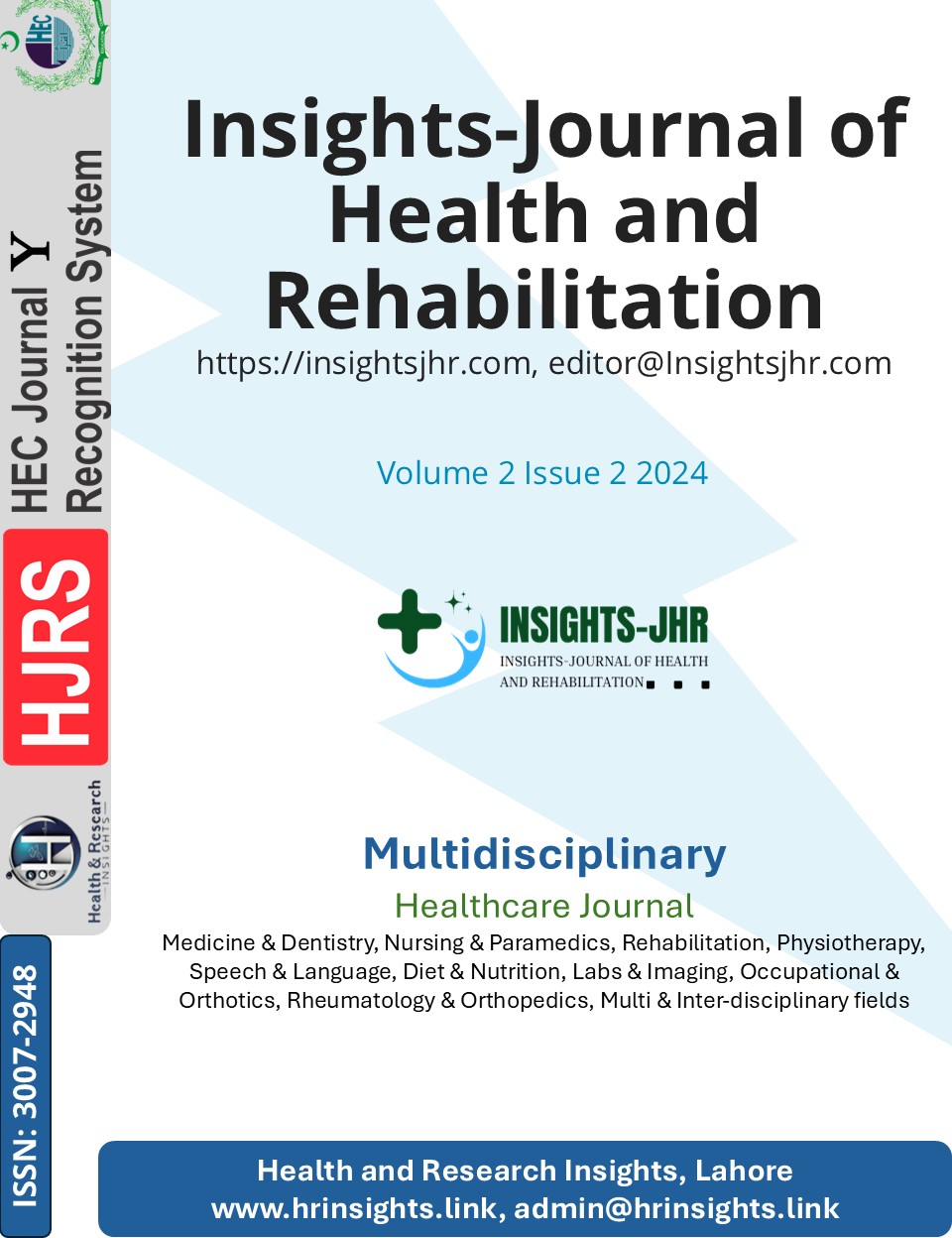INCIDENCE OF RECURRENT LARYNGEAL NERVE INJURY IN HEMI THYROIDECTOMY AND TOTAL THYROIDECTOMY AT JPMC KARACHI
DOI:
https://doi.org/10.71000/ijhrali224Keywords:
Fine needle aspiration cytology (FNAC), hemi-thyroidectomy, incidence, recurrent laryngeal nerve injury, surgical outcomes, thyroidectomy, total thyroidectomyAbstract
Background: Recurrent laryngeal nerve (RLN) injury is a significant complication of thyroid surgery, affecting essential functions like speech and breathing. Damage to the RLN can lead to hoarseness, speaking difficulties, and respiratory issues, impacting patients' quality of life. Total thyroidectomy and hemi-thyroidectomy are common surgical approaches for managing thyroid disorders, but their associated risks for RLN injury require careful evaluation to guide clinical decision-making.
Objective: To determine the incidence of recurrent laryngeal nerve injury and compare its frequency in hemi-thyroidectomy and total thyroidectomy.
Methods: A comparative cross-sectional study was conducted at the surgical ward of Jinnah Postgraduate Medical Center, Karachi. A total of 158 patients who met the inclusion criteria were divided into two groups: Group I (n=79) underwent hemi-thyroidectomy, and Group II (n=79) underwent total thyroidectomy. Data on sociodemographic details, presenting complaints, preoperative FNAC reports, comorbidities, indications for surgery, and operative procedures were collected from hospital records and recorded on a predesigned questionnaire. Surgical outcomes and the incidence of RLN injury were evaluated.
Results: In Group I, the mean age was 34.2 ± 4.89 years, mean BMI was 26.12 ± 2.74 kg/m², mean nodular size was 2.11 ± 0.85 cm, and mean surgery duration was 52.32 ± 12.21 minutes. In Group II, the mean age was 41.11 ± 6.34 years, mean BMI was 27.23 ± 2.88 kg/m², mean nodular size was 2.43 ± 0.94 cm, and mean surgery duration was 72.34 ± 19.75 minutes. Recurrent laryngeal nerve injury occurred in 6 patients (7.59%) in Group I and 9 patients (11.39%) in Group II.
Conclusion: Both hemi-thyroidectomy and total thyroidectomy are effective and safe surgical approaches for thyroid gland removal, with comparable risks of transient RLN injury when performed by experienced surgeons.
Downloads
Published
Issue
Section
License
Copyright (c) 2024 Zulfiqar Ali, Zahid Mehmood, Muhammad Yasir Mengal, Kanwal, Muhammad Nabeel, Muhammad Parial Shahani (Author)

This work is licensed under a Creative Commons Attribution-NonCommercial-NoDerivatives 4.0 International License.







